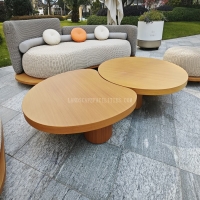Welcome to the website for landscape facilities products and knowledge.
What are the cost-benefit analyses of using sustainable materials for landscape tables?
The shift toward sustainable materials in landscape furniture, particularly tables, is gaining momentum as businesses and homeowners prioritize eco-conscious choices. A thorough cost-benefit analysis reveals both immediate and long-term advantages of this transition.
Initial Costs vs. Long-Term Savings
While sustainable materials like recycled plastic, reclaimed wood, or bamboo may have higher upfront costs compared to conventional options, their durability often offsets this expense. These materials resist weathering, rot, and pests, reducing replacement frequency and maintenance costs over time.
Environmental Benefits
Sustainable materials minimize environmental degradation by reducing reliance on virgin resources and lowering carbon footprints. For instance, recycled plastic tables divert waste from landfills, while FSC-certified wood supports responsible forestry. These choices align with green building certifications, enhancing property value.
Market Appeal and ROI
Eco-friendly landscape tables appeal to environmentally conscious consumers, potentially increasing demand for commercial spaces or residential properties. Businesses leveraging sustainability can also benefit from tax incentives or grants aimed at green initiatives.
Challenges to Consider
Sourcing sustainable materials may require additional research, and limited local availability could increase logistics costs. However, as demand grows, supply chains are becoming more efficient, gradually lowering prices.
In conclusion, while sustainable landscape tables involve higher initial investments, their long-term financial, environmental, and reputational benefits make them a compelling choice for forward-thinking projects.
Related search:

Recommendation
Elliptical metal outdoor table with nested design, resembling wood grain, round table